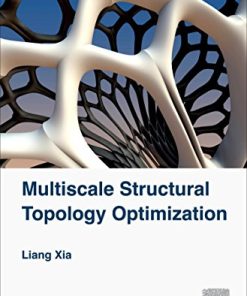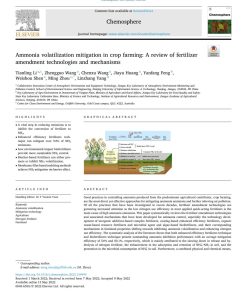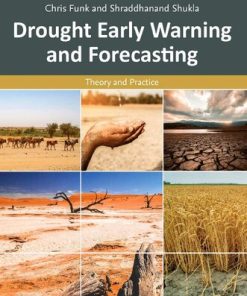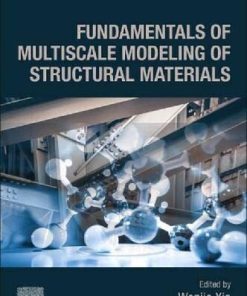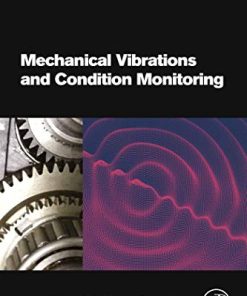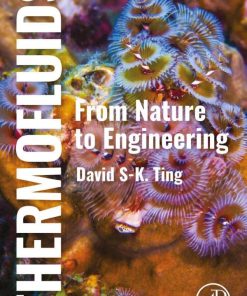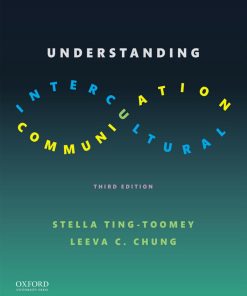Rockburst Mechanisms Monitoring Warning and Mitigation 1st edition by Xia Ting Feng 0128052051 9780128052051
$50.00 Original price was: $50.00.$25.00Current price is: $25.00.
Rockburst: Mechanisms, Monitoring, Warning, and Mitigation 1st edition by Xia-Ting Feng – Ebook PDF Instant Download/DeliveryISBN: 0128052051, 9780128052051
Full download Rockburst: Mechanisms, Monitoring, Warning, and Mitigation 1st edition after payment.
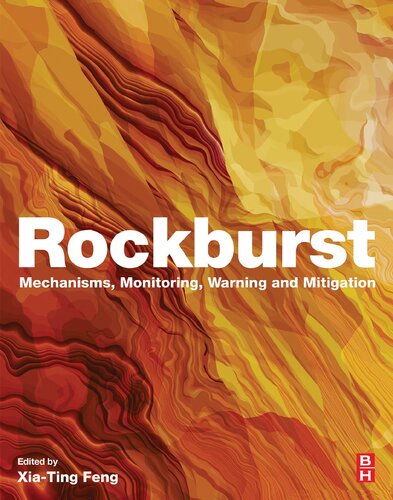
Product details:
ISBN-10 : 0128052051
ISBN-13 : 9780128052051
Author: Xia-Ting Feng
Rockburst: Mechanisms, Monitoring, Warning and Mitigation invites the most relevant researchers and practitioners worldwide to discuss the rock mechanics phenomenon related to increased stress and energy levels in intact rock introduced by drilling, explosion, blasting and other activities. When critical energy levels are reached, rockbursts can occur causing human and material losses in mining and tunneling environments. This book is the most comprehensive information source in English to cover rockbursts.
Comprised of four main parts, the book covers in detail the theoretical concepts related to rockbursts, and introduces the current computational modeling techniques and laboratory tests available. The second part is devoted to case studies in mining (coal and metal) and tunneling environments worldwide. The third part covers the most recent advances in measurement and monitoring. Special focus is given to the interpretation of signals and reliability of systems. The following part addresses warning and risk mitigation through the proposition of a single risk assessment index and a comprehensive warning index to portray the stress status of the rock and a successful case study. The final part of the book discusses mitigation including best practices for distressing and efficiently supporting rock.
Rockburst: Mechanisms, Monitoring, Warning, and Mitigation 1st Table of contents:
Part I: Characteristics of Rockbursts
Chapter 1: Description and Engineering Phenomenon of Rockbursts
Subchapter 1.1 Description of Rockbursts in Tunnels
1.1.1 Introduction
1.1.2 Location of Rockbursts in Tunnels
1.1.3 Time of Rockbursts Occurring in Tunnels
1.1.4 Influence of Geological Structures on Rockbursting at Tunnels
1.1.5 Differences Between Rockbursts in D&B Tunnels and TBM Tunneling
Subchapter 1.2 Description of Rockbursts in Mines
1.2.1 What is a Rockburst?
1.2.2 Description of the Rockburst
1.2.3 Type of Rockbursts at Mines
1.2.4 Consequences of the Rockburst at Mines
1.2.5 Rockmass Behavior and Energy Consideration
Chapter 2: Case Histories of Rockburst at Tunnels
Subchapter 2.1 Rockbursts in Tunnels in China
2.1.1 The General Situation of Rockbursts in Tunnels in China
2.1.2 Case Histories of Rockburst in Tunnels, China
Subchapter 2.2 Rock Bursts in Tunnels in the Himalayas—A Case Review
2.2.1 Introduction
2.2.2 The Parbati II Hydroelectric Project
2.2.3 Rockburst Events
2.2.4 Review of Rock Mechanical Properties
2.2.5 Discussions and Conclusion
Chapter 3: Case Histories of Rockbursts at Metal Mines
Subchapter 3.1 Rockbursts in Metal Mines in China
3.1.1 Introduction
3.1.2 Rockburst Condition and Characteristics
3.1.3 Rockburst Monitoring and Control
3.1.4 Microseismic Monitoring in the Hongtoushan Copper Mine
Subchapter 3.2 Rockbursts in Some Bushveld Platinum Mines
Acknowledgments
3.2.1 Introduction
3.2.2 Characteristics of Seismicity in the Bushveld Complex
3.2.3 Pillar Failure Examples
3.2.4 Other Source Mechanisms
3.2.5 Summary
Subchapter 3.3 Rockbursts in Metal Mines in North America
3.3.1 Introduction
3.3.2 Red Lake Mine
3.3.3 Kidd D Mine
3.3.4 La Ronde Mine
Subchapter 3.4 Rockbursts in the Underground Mines at Kolar Gold Fields, India
3.4.1 Introduction
3.4.2 Geological Setting
3.4.3 Mining Methods
3.4.4 Seismic Monitoring
3.4.5 Case Studies of Rockbursts
3.4.6 Other Investigations
3.4.7 Summary
Subchapter 3.5 Typical Characteristics of Rockburst Ground Motion
3.5.1 Introduction
3.5.2 Ground Motion Characteristics to Characterize Rockbursts
3.5.3 Anaysis of Selected Type I and Type II Ground Motion Records
3.5.4 Conclusions
Chapter 4: Case Histories of Rockburst at Coal Mines
Subchapter 4.1 Coal Mines in China: Characteristics and Conditions Mechanism
4.1.1 Rockburst Characteristics
4.1.2 Occurrence Conditions of Rockburst
4.1.3 Mechanism of a Rockburst
Subchapter 4.2 Rockbursts in European Coal Mines
4.2.1 Coalmines in Europe
4.2.2 Rockburst in European Coalmines
4.2.3 Conclusion
Part II: Mechanism of Rockbursts
Chapter 5: Laboratory Experiment of Rockburst Evolution Mechanism
Subchapter 5.1 Brittleness and Ductility of Rocks
5.1.1 Rock Brittleness and the Ductility of Hard Rocks Recognized by Triaxial Compression Tests
5.1.2 Rock Brittleness and Ductility of Hard Rocks Recognized by True Triaxial Compression Tests
5.1.3 Dilatancy of Hard Rocks Under True Triaxial Compression Condition
Subchapter 5.2 Rock Failure by Loading and Unloading
5.2.1 Triaxial Confining Pressure Unloading Test
5.2.2 Rock Brittle Failure Process at Biaxial Loading Path With σ3 = 0 MPa
5.2.3 Energy Release Features and Rockburst Proneness Under True Triaxial Compression Condition
5.2.4 Brittle Failure of Hard Rocks Under True Triaxial Comparison With σ3 Loading and Unloading
5.2.5 True Triaxial Testing of Remotely Triggered Rockburst
Subchapter 5.3 Characteristics of Rockbursts in Laboratory Observation
5.3.1 Introduction
5.3.2 Material
5.3.3 Experiment
5.3.4 Result and Discussion
5.3.5 Summary
Subchapter 5.4 Physics Experiments on Rockburst in Lab
5.4.1 Rockburst Study
5.4.2 Rockburst Experiments in Lab
5.4.3 Rockburst Criterion
5.4.4 Summary
Chapter 6: Understanding of Rockburst Evolution Mechanism Using In Situ Data
Subchapter 6.1 Understanding Rockburst Evolution Process by Comprehensive In Situ Monitoring in a Deep Tunnel
6.1.1 Introduction
6.1.2 Comprehensive In Situ Monitoring Methods for the Rockburst Development Process
6.1.3 Case Study
6.1.4 Rockburst Evolution Process Based on In Situ Monitoring Results
6.1.5 Comparison and Verification With Other Rockbursts
6.1.6 Conclusions
Subchapter 6.2 Evolution Mechanisms of Rockbursts in Tunnels Based on In Situ-Monitored Microseismicity
6.2.1 Methodology
6.2.2 Evolution Mechanism of Rockburst in TBM Tunnel
6.2.3 Evolution Mechanism of Rockburst in a D&B Tunnel
6.2.4 Summary
Subchapter 6.3 Discussion of the Features of a Shear Rupture Rockburst Mechanism Based Upon a Recently Identified Fan-Head Dynamic Shear Rupture Mechanism
6.3.1 Introduction
6.3.2 Features of Rock Failure Governed by the Fan Mechanism
6.3.3 Features of Shear Rupture Rockburst Caused by the Fan Mechanism
6.3.4 Summary
Subchapter 6.4 Mechanisms of Rockbursts vs Natural Earthquakes☆
6.4.1 Introduction
6.4.2 Method
6.4.3 Case Studies
6.4.4 Summary
Acknowledgments
Chapter 7: Understanding of Rockburst Evolution Mechanism Using Numerical Modeling
Subchapter 7.1 Numerical Study of the Rockburst Mechanism Using the Elastoplastic Cellular Automaton
7.1.1 Introduction
7.1.2 An Introduction of the EPCA
7.1.3 Illustration Examples
7.1.4 Conclusions
Subchapter 7.2 Rockburst Development Process Simulation Using Continuum-Discontinuum Cellular Automaton
7.2.1 Introduction
7.2.2 Continuum-Discontinuum Cellular Automaton Method
7.2.3 Rockburst Case Study
7.2.4 Conclusion
Subchapter 7.3 Discontinuous Deformation Analysis
7.3.1 Introduction
7.3.2 Strain Energy Change Due to Excavation
7.3.3 Rockburst Modeling in Discontinuous Rock Masses With DDA
7.3.4 Discussion
7.3.5 Summary and Conclusions
Subchapter 7.4 Numerical Modeling of Ground Motion Near Underground Excavation Boundaries⁎
7.4.1 Introduction
7.4.2 Seismic Source Models and Ground Motion Simulation
7.4.3 Influence of Geology, Geometry, and Rock Mass Quality on Ground Motions Near Underground Excavations
7.4.4 Conclusions
Acknowledgments
Part III: Monitoring and Data Analysis of Rockbursts
Chapter 8: Monitoring Systems in Rockbursts
Subchapter 8.1 Development of Microseismic Monitoring Systems in China
8.1.1 Introduction
8.1.2 The SinoSeiSm Monitoring System
8.1.3 Application of System in the Hongtoushan Copper Mine, China
8.1.4 Conclusions
Subchapter 8.2 The IMS Seismic Monitoring System⁎
8.2.1 Introduction
8.2.2 Seismic Sensors
8.2.3 Digital Seismic Monitoring System
8.2.4 Active Seismic Sources
8.2.5 Applications
Subchapter 8.3 Monitoring Microseismicity in Canadian Mines
8.3.1 Introduction
8.3.2 Seismic Event Location Using 3D VMs
8.3.3 Clustering Analysis
8.3.4 Source Parameters
8.3.5 Conclusions
Subchapter 8.4 Multiparameter and Infrared Monitoring Systems for Real-Time Rockburst Susceptibility Evaluation and Their Applications to Practice in Japan
8.4.1 Introduction
8.4.2 Multiparameters and Infrared Monitoring Systems
8.4.3 Experiments on Rock Samples
8.4.4 Laboratory Experiments on Model Underground Openings
8.4.5 Applications to Several Tunnels
8.4.6 Multiparameter Monitoring Results During July 20–26, 2014
8.4.7 Multiparameter Monitoring Results During September 20–26, 2014
8.4.8 AE Responses at the Tunnel Face
8.4.9 Infrared Monitoring System
Chapter 9: Microseismic Monitoring Method of the Rockburst Evolution Process
9.1 Monitoring Scope and Principle
9.2 Selection of Monitoring Equipment
9.3 Necessary Measures for Improving Rockburst Monitoring Quality
9.4 Data Analysis of Near-Field Rockburst Monitoring
9.5 Presentation of Monitoring Results
Appendix
Chapter 10: Latest Developments on Analysis of Data Monitored
Subchapter 10.1 Neural Networks for Noise Filtering of Microseismicity Monitoring in Tunnels
10.1.1 Methodology
10.1.2 Application
10.1.3 Summary
Subchapter 10.2 An Intelligent Microseismic Source Location Algorithm Using a Hierarchical Strategy
10.2.1 Introduction
10.2.2 The Layered PSO Location Method for Microseismic Sources
10.2.3 Algorithm Performances
10.2.4 Engineering Case
10.2.5 Discussion of the Velocity Model
10.2.6 Conclusions
Subchapter 10.3 Velocity Models for Microseismic Source Locations in Tunnels
10.3.1 Introduction
10.3.2 Performance Analysis of the Velocity Models
Part IV: Risk Assessment and Warning of Rockbursts
Chapter 11: Assessment of Rockburst Risk
Subchapter 11.1 Single and Comprehensive Index Methods of Rockburst Risk Assessment
11.1.1 Empirical Criteria of Rockburst Evaluation Based on a Single Index
11.1.2 Empirical Indices or Evaluation Systems of Multiple Factors of Rockbursts
11.1.3 Rockburst Vulnerability Index
11.1.4 Dynamical Assessment of Rockburst Risk Based on an Empirical Index
Subchapter 11.2 Neural Networks for Rockburst Risk Assessment for Deep Tunnels
11.2.1 Basic Theory of Neural Network
11.2.2 Database for Rockbursts at Jinping Tunnels
11.2.3 Building the Neural Network Model for Assessing Rockburst Risk
11.2.4 Engineering Application
Subchapter 11.3 Probabilistic Assessment of Mining-Induced Time-Dependent Seismic Hazards
11.3.1 Formulation of the Problem
11.3.2 Modeling the Seismic Activity of a Future Zone
11.3.3 Exceedance Probability of Ground Motion Amplitude
11.3.4 Modeling Probabilistic Distributions of Zone Seismicity
11.3.5 Modeling Conditional Probability of Ground Motion Amplitude
11.3.6 Example
Subchapter 11.4 Rockburst Prediction Methods and Their Applicability
11.4.1 Introduction
11.4.2 Norwegian Rule of Thumb
11.4.3 Stress Problem Classification
11.4.4 Uniaxial Compressive and Tensile Strength Approach
11.4.5 Maximum Tangential Stress and Rock Spalling Strength Approach
11.4.6 Applicability and Input Requirements
11.4.7 Conclusion
Subchapter 11.5 Recognition of Rockburst Intensity Using In Situ-Monitored Microseismicity
11.5.1 Introduction
11.5.2 A Quantitative Recognition Criterion for Rockburst Intensity
11.5.3 Two Typical Examples Using the New Rockburst Intensity Quantitative Recognition Criterion
11.5.4 Conclusions
Chapter 12: Warning of Rockburst
Subchapter 12.1 Why Can We Make Some Warning of Rockbursts?
Subchapter 12.2 Fractal Behavior of Microseismicity Associated With Rockbursts in Deep Tunnels
12.2.1 Introduction
12.2.2 The Fractal Behavior of Microseismic Energy Associated With Rockbursts
12.2.3 Temporal Fractal Dimensions of Microseismic Events for Immediate Rockbursts
12.2.4 Spatial Fractal Dimension of Microseismic Events for Immediate Rockbursts
12.2.5 Discussion and Conclusions
Subchapter 12.3 Dynamic and Quantitative Warning of Rockbursts in Tunnels Using the In Situ Monitored Microseismicity
12.3.1 Methodology
12.3.2 Rockburst Warning at D&B Tunnels
12.3.3 Rockburst Warning at TBM Tunnels
Subchapter 12.4 Rockburst Predictions by Seismic Monitoring Data
12.4.1 Introduction
12.4.2 Physical Basis for Seismicity Analysis
12.4.3 Rockburst Prediction Principles
12.4.4 Summary
Subchapter 12.5 Successful Examples of Rockburst Warnings in coal mines, China
12.5.1 Successful Warning of Rockburst at the Junde Coal Mine
12.5.2 Successful Rockburst Warning at the Sanhejian Coal Mine
Part V: Mitigation of Rockburst Risk
Chapter 13: Avoiding High-Stress Concentrations by Reasonable Excavation Methods
13.1 Optimization of the Shape of the Tunnel Cross Section
13.2 Optimization of the Tunnel Cross-Section Area of One Step of the Excavation
13.3 Optimization of Tunnel Spacing
13.4 Excavation of Approaching Faults
13.5 Reasonably Stopping Excavation of One Working Face When Opposite Excavation of Two Working Faces
13.6 Dynamic Adjustment of Tunnel Advance Rate
Chapter 14: Destressing
14.1 Destress Blasting
14.2 Destressing Spaces
14.3 Hydrofracturing and Water Infusion
14.4 Evaluation of Effectiveness
14.5 Examples of Implementation
14.6 Destress Blasting in Tunneling
Chapter 15: Excavation Vulnerability and Selection of Effective Rock Support to Mitigate Rockburst Damage
Acknowledgments
Preamble
Glossary
Chapter 16: Successful Examples for Mitigating Rockbursts
Subchapter 16.1 Successful Examples for Mitigating Rockbursts in Jinping II Tunnels China
Subchapter 16.2 Successful Examples for Mitigating Rockburst in CJPL-II Tunnels China
Subchapter 16.3 Successful Examples for Mitigating Rockbursts in Tunnels Pakistan
16.3.1 Case 1: Mitigation of Intense Rockburst Risk
16.3.2 Case 2: Moderate Rockburst Risk Mitigation
Chapter 17: Mitigating Rockburst Effects for Civil Engineering Infrastructure and Buildings
17.1 Introduction
17.2 Elastic Design Response Spectrum
17.3 Design Peak Ground Acceleration
17.4 Inelastic Design Response Spectrum
17.5 Summary of the Methodology
17.6 Engineering Example One
17.7 Engineering Example Two
17.8 Final Remarks
Chapter 18: Conclusions and Future Developments
People also search for Rockburst: Mechanisms, Monitoring, Warning, and Mitigation 1st:
rockburst: mechanisms
rockburst mechanisms in tunnels and shafts
rockburst mechanisms monitoring warning and mitigation
what is mechanisms
what is the mechanism of autoimmunity
Tags: Rockburst, Mechanisms, Monitoring, Warning, Xia Ting Feng
You may also like…
Engineering
Multiscale Structural Topology Optimization 1st Edition by Liang Xia 1785481000 9781785481000
Engineering - Civil & Structural Engineering
Fundamentals of Multiscale Modeling of Structural Materials 1st Edition
Technique - Heat
Thermofluids From Nature to Engineering 1st edition by David Ting 0323914551 9780323914550
dictionaries & phrasebooks
Understanding Intercultural Communication 2nd Edition Stella Ting-Toomey
Uncategorized
Engineering - Environmental



